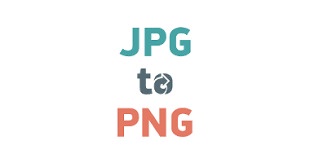Introduction
In today's digitally-driven world, images have become an integral part of our everyday lives, serving as powerful tools for communication, expression, and storytelling. However, the effectiveness of an image often depends on its format, and there are times when converting between formats becomes necessary. One such common conversion is the transformation from JPG file to PNG. In this article, we embark on a journey to explore the intricacies of these two formats, the need for conversion, and how online converters simplify this process.
what are the JPG and PNG?
Before diving into the conversion process, it's essential to grasp the unique characteristics of JPG and PNG formats.
-
JPG (or JPEG): Joint Photographic Experts Group, commonly known as JPG, is a popular image format renowned for its ability to efficiently compress photographs and images with complex color gradients. JPG employs lossy compression, which sacrifices some image data to reduce file size while maintaining acceptable visual quality. This compression method makes JPG ideal for web usage, digital photography, and everyday image sharing.
-
PNG (Portable Network Graphics): PNG is a versatile image format celebrated for its lossless compression and support for transparency. Unlike JPG, PNG preserves all image data without compromising quality, making it perfect for images requiring sharp edges, text, or transparent backgrounds. PNG is often favored for digital artwork, logos, and images demanding high fidelity and clarity.
Differences between JPG and PNG
The decision to choose between JPG and PNG hinges on factors such as image content, intended use, and desired quality.
-
Compression: JPG utilizes lossy compression, resulting in smaller file sizes but potential loss of image quality over time due to compression artifacts. Conversely, PNG employs lossless compression, maintaining image integrity and detail without sacrificing quality.
-
Transparency: PNG supports alpha channels, enabling transparent backgrounds or semi-transparent elements, a feature not available in JPG.
-
Image Types: While JPG is suitable for photographs and images with complex color gradients, PNG excels in preserving sharp edges, text, and graphics.
The Need for Converting JPG to PNG
Several scenarios necessitate converting JPG to PNG:
-
Preserving Transparency: Images requiring transparent backgrounds or alpha channels, such as logos or digital artwork, benefit from PNG's transparency support.
-
Maintaining Image Quality: Converting JPG to PNG allows for lossless compression, ensuring image quality remains intact without degradation.
-
Enhancing Text and Graphics: PNG is better suited for images containing text, graphics, or sharp edges, as it preserves clarity and detail more effectively.
-
Ensuring Compatibility: Certain applications or platforms may require images to be in PNG format for compatibility reasons, prompting the conversion from JPG to PNG.
Conclusion
In conclusion, the journey from JPG to PNG represents a transformative shift in image quality, transparency, and versatility. By understanding the nuances of each format and the need for conversion, users can harness the strengths of both JPG and PNG to meet their specific requirements effectively. Online converters offer a seamless and efficient solution for converting between these formats, empowering users to unlock the full potential of their images with ease and convenience. Whether preserving transparency, enhancing image quality, or ensuring compatibility, the conversion from JPG to PNG opens up a world of possibilities for digital creatives, professionals, and enthusiasts alike.


No comments yet